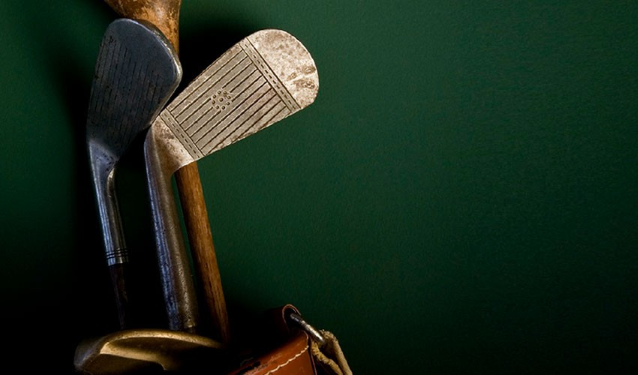Battery Composition and Technology
Understanding the inner workings of a battery helps you appreciate its performance. Lithium-ion batteries rely on advanced components like LiFePO4 cathodes and graphite anodes, which deliver high energy density and long cycle life. Lead-acid batteries use simpler materials, including lead plates and sulfuric acid electrolytes, which are less efficient but cost-effective.
Key components of lithium-ion batteries include:
Electrodes: Cathodes made of metal oxides and anodes typically composed of graphite or silicon.
Electrolytes: Facilitate ion movement between electrodes for energy storage and release.
Separators: Prevent direct contact between electrodes while allowing ionic conductivity.
Current Collectors: Copper and aluminum foils ensure efficient electron transport.
Lead-acid batteries, while traditional, lack the advanced materials and design considerations of lithium-ion technology. This difference explains why lithium-ion batteries dominate modern applications, including golf cart batteries.
Weight and Size Comparison
Battery weight and size directly impact your golf cart’s performance. Lithium-ion batteries are lightweight and compact, making them ideal for golf carts. Their reduced weight improves speed, handling, and energy efficiency. Lead-acid batteries, on the other hand, are bulkier and heavier, which can slow down your cart and limit its range.
For example, a lithium-ion battery weighs about one-third of a comparable lead-acid battery. This weight difference allows you to carry more passengers or equipment without compromising performance. Compact lithium-ion designs also fit seamlessly into most golf cart models, ensuring compatibility and ease of installation.
Charging Time and Efficiency
Charging time and energy efficiency are critical factors for any golf cart battery. Lithium-ion batteries charge in just 1–3 hours, while lead-acid batteries require up to 14 hours. This faster charging time means you spend less time waiting and more time enjoying your golf cart.
Lithium-ion batteries also boast a 99% charge efficiency, ensuring almost all the energy goes directly into powering your cart. Lead-acid batteries, by comparison, have an efficiency range of 20-60%, which results in wasted energy and higher electricity costs.
Battery Type | Charging Time | Energy Efficiency |
|---|---|---|
Lithium-ion | 1–3 hours | 99% charge efficiency |
Lead-acid | 14 hours | 20-60% efficiency |
When you choose a lithium-ion golf cart battery, you gain the advantage of faster charging and better energy utilization, making it the superior choice for modern golf carts.
Performance Comparison
Power Output and Consistency
The power output of a battery determines how well your golf cart performs under different conditions. Lithium-ion batteries deliver consistent power throughout their discharge cycle. This means your golf cart maintains steady speed and performance, even as the battery charge decreases. Lead-acid batteries, however, experience a drop in voltage as they discharge. This can lead to sluggish performance and reduced efficiency, especially during longer rides.
Lithium-ion technology ensures that your golf cart operates smoothly on steep hills and uneven terrain. You’ll notice improved acceleration and responsiveness, making your rides more enjoyable. Lead-acid batteries may struggle to provide the same level of power consistency, particularly when the battery nears depletion. If you want reliable performance every time you hit the course, lithium-ion batteries are the clear choice.
Longevity and Cycle Life
Battery lifespan plays a crucial role in determining long-term value. Lithium-ion batteries offer significantly higher cycle life compared to lead-acid batteries. While lead-acid batteries typically last for 500–1,000 cycles, lithium-ion batteries can exceed 4,000 cycles. This extended lifespan means fewer replacements and lower overall costs.
Dynamic cycling methods further enhance the longevity of lithium-ion batteries. Research shows that these methods can increase equivalent full cycles by up to 38% compared to constant current cycling. This makes lithium-ion batteries ideal for golf cart owners who prioritize durability and long-term performance. Lead-acid batteries, though less expensive initially, require more frequent replacements, adding to their overall cost.
Maintenance Requirements
Maintenance is another critical factor to consider when choosing a golf cart battery. Lead-acid batteries demand regular upkeep, including adding water to cells and cleaning terminals to prevent corrosion. These tasks can be time-consuming and inconvenient, especially for busy golf cart owners.
Lithium-ion batteries, on the other hand, are virtually maintenance-free. You won’t need to worry about watering or cleaning, which saves you time and effort. Their advanced design eliminates the risk of acid leaks and corrosion, ensuring a cleaner and safer experience.
Battery Type | Maintenance Requirements | Efficiency and Cost Benefits |
|---|---|---|
Lead-Acid | Requires manual addition of water to cells; moderate upkeep | Low initial cost, long lifespan |
Lithium-Ion | No need for constant watering or cleaning; minimal upkeep | Reduces labor costs and downtime, more efficient power usage |
Choosing a lithium-ion golf cart battery simplifies your ownership experience. You’ll enjoy reliable performance without the hassle of regular maintenance, making it a smarter investment for 2025.
Cost-Effectiveness Analysis
Upfront Costs
When comparing lithium-ion and lead-acid batteries, the initial purchase price is one of the most noticeable differences. Lead-acid batteries are more affordable upfront, with prices ranging between $90 and $150. Lithium-ion batteries, particularly those using LiFePO4 technology, cost more initially, with prices ranging from $190 to $600.
However, the higher upfront cost of lithium-ion batteries reflects their advanced technology and superior performance. These batteries offer a significantly longer lifespan, often exceeding 2,000 charge cycles. In contrast, lead-acid batteries typically last only 300 to 500 cycles. This means that while you may pay less initially for a lead-acid battery, you will likely need to replace it multiple times over the same period that a single lithium-ion battery remains operational.
Maintenance costs also add to the total expense. Lead-acid batteries require regular upkeep, such as adding water and cleaning terminals, which can cost $50 to $100 annually. Lithium-ion batteries, on the other hand, are virtually maintenance-free, with annual costs as low as $10 to $20. These savings make lithium-ion batteries a more cost-effective choice in the long run, despite their higher initial price.
Long-Term Savings
Investing in a lithium-ion battery for your golf cart offers substantial long-term savings. These batteries are designed to maximize energy efficiency, reducing electricity costs over time. With a charge efficiency of 99%, nearly all the energy you use to charge a lithium-ion battery is converted into usable power. Lead-acid batteries, by comparison, waste a significant portion of energy during charging, leading to higher operational costs.
Lithium-ion batteries also contribute to savings through their extended lifespan. With over 2,000 charge cycles, these batteries last much longer than their lead-acid counterparts. This durability reduces the frequency of replacements, saving you money on new batteries and installation fees. Additionally, the maintenance-free design of lithium-ion batteries eliminates the need for regular servicing, further lowering your overall expenses.
Beyond financial savings, lithium-ion batteries offer environmental and social benefits. Recycling these batteries helps reduce waste and recover valuable materials, which can be reused in new battery production. This process not only minimizes environmental impact but also creates economic opportunities, such as jobs in recycling and manufacturing. By choosing lithium-ion technology, you invest in a sustainable solution that benefits both your wallet and the planet.
Replacement Frequency
The frequency with which you need to replace your golf cart battery directly impacts your overall costs. Lead-acid batteries, with their shorter lifespan of 300 to 500 cycles, require frequent replacements. If you use your golf cart regularly, you may need to replace a lead-acid battery every two to three years. Over a decade, this could mean purchasing three to five batteries, significantly increasing your total expenses.
Lithium-ion batteries, in contrast, offer a much longer lifespan. With over 2,000 charge cycles, these batteries can last up to 10 years or more, depending on usage. This longevity means fewer replacements, saving you both time and money. The durability of lithium-ion batteries also ensures consistent performance throughout their lifespan, reducing the likelihood of unexpected breakdowns or additional repair costs.
By choosing a lithium-ion battery, you make a smart investment that pays off over time. The reduced replacement frequency, combined with lower maintenance and operational costs, makes lithium-ion batteries the superior choice for golf cart owners looking to save money in the long run.



